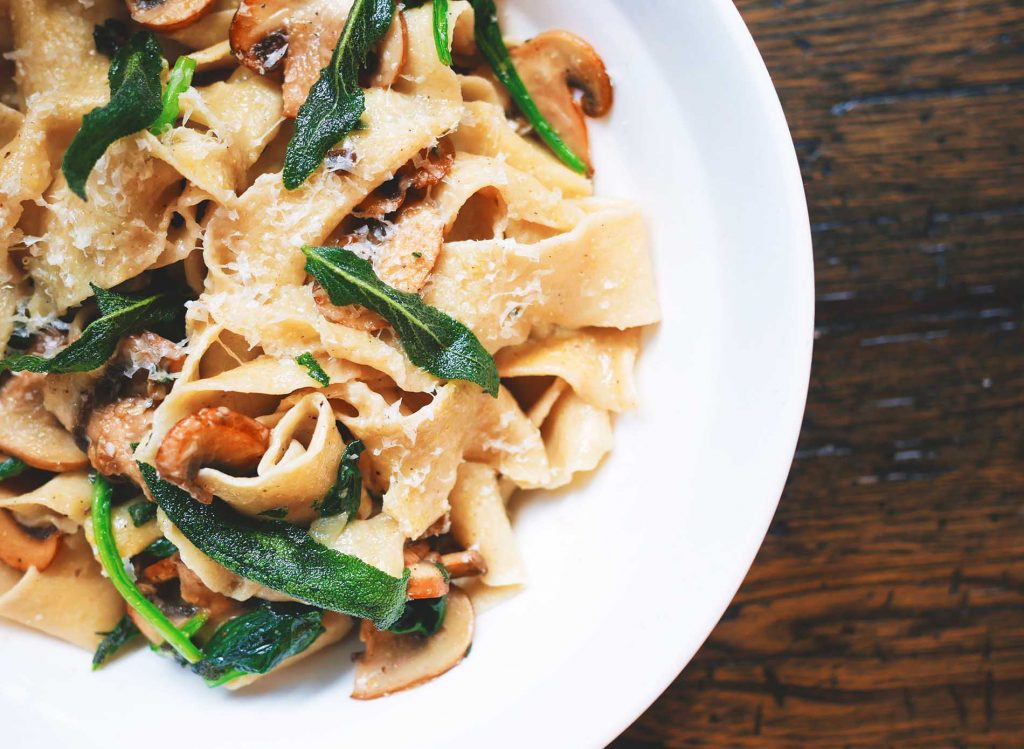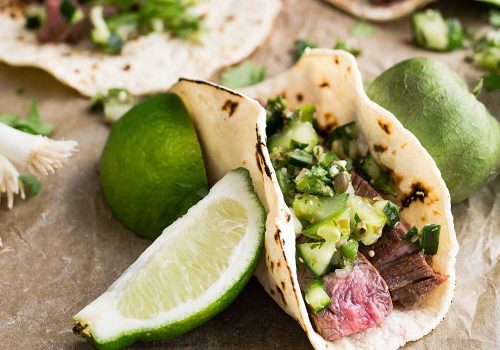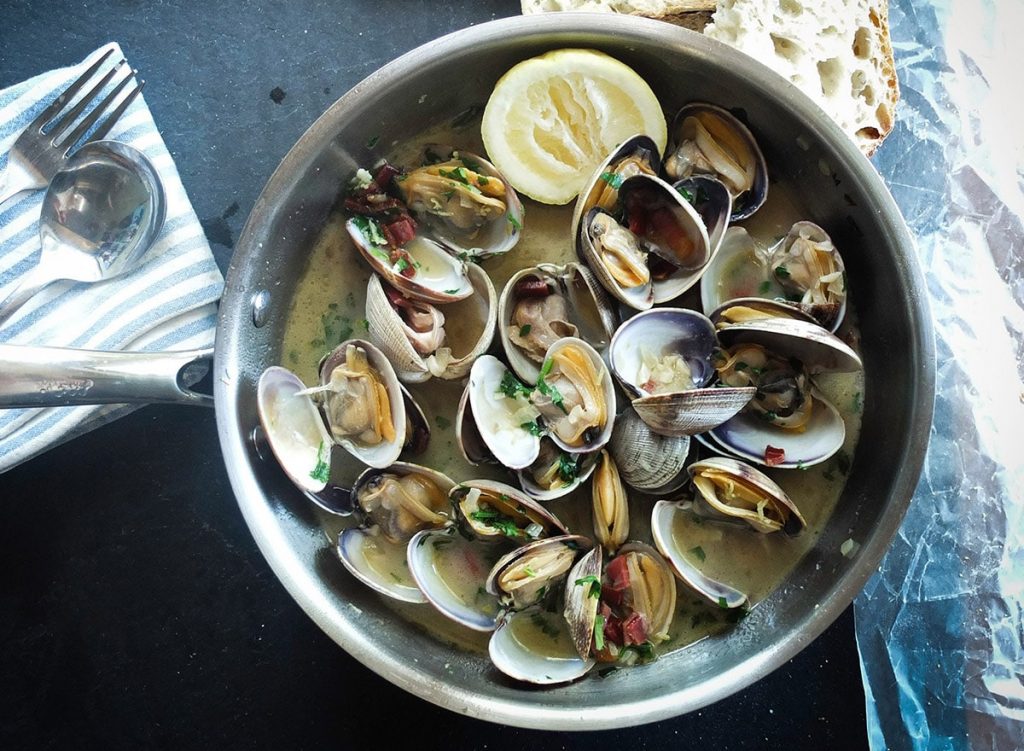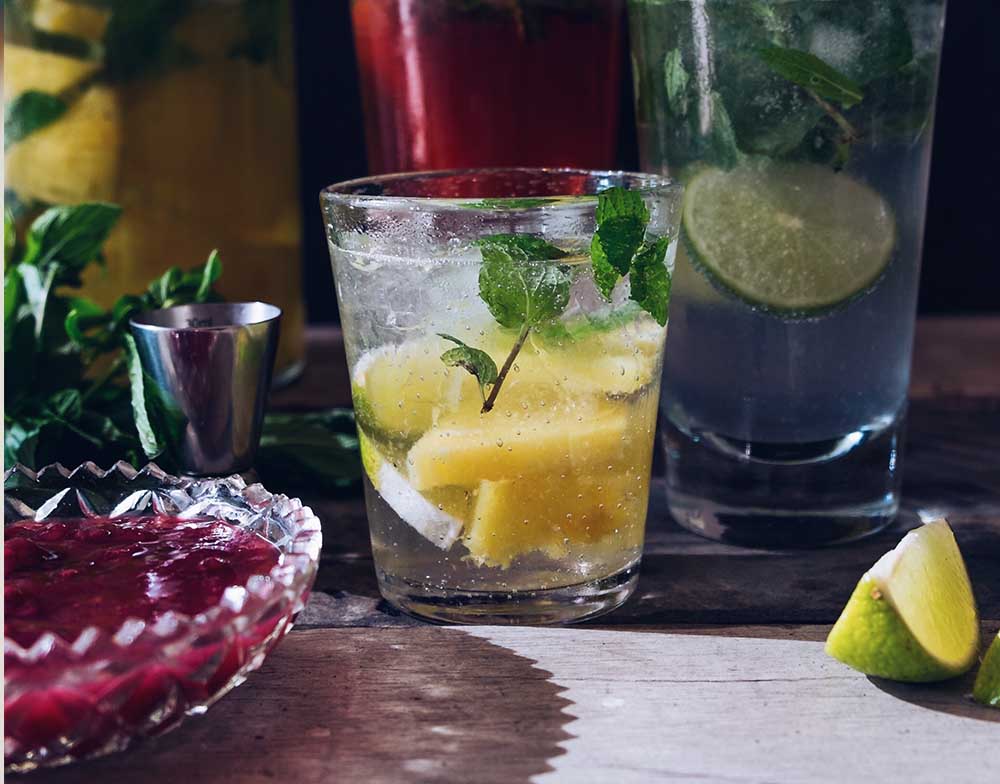Featured
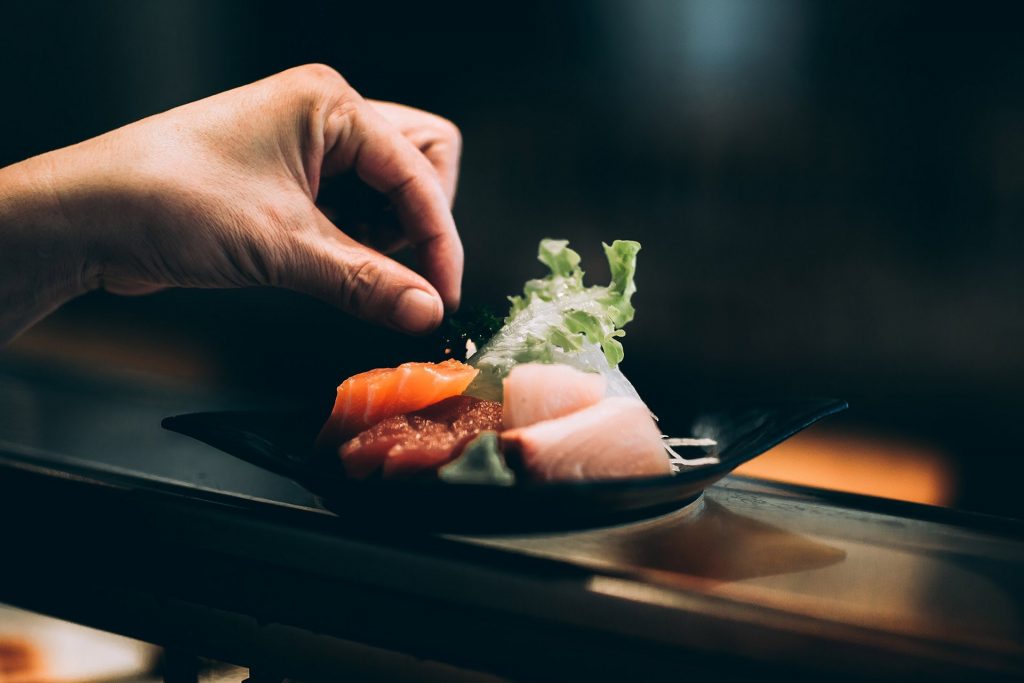
$10
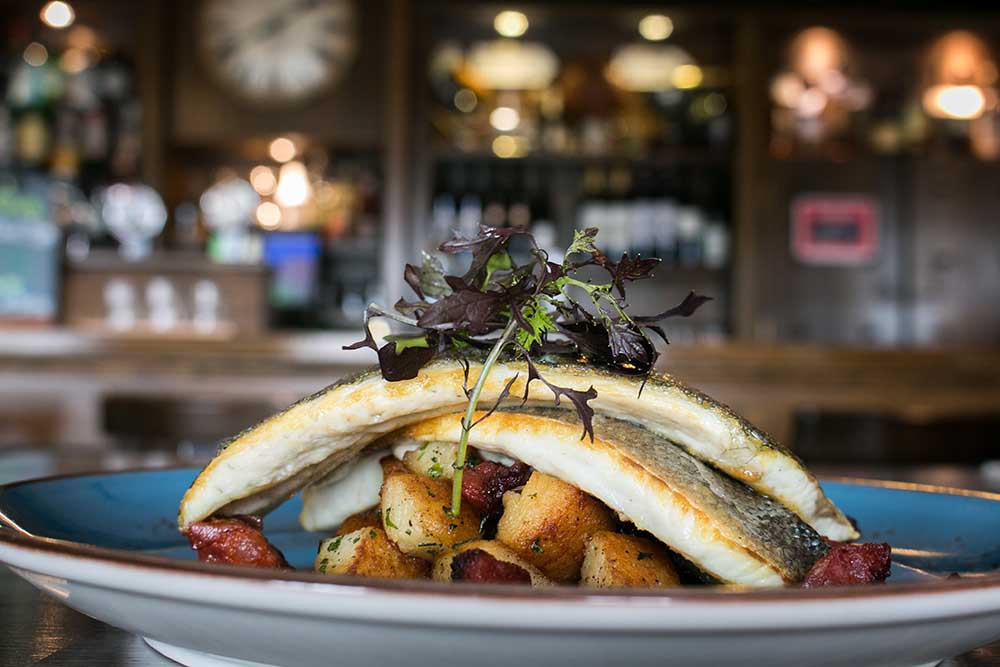
$13
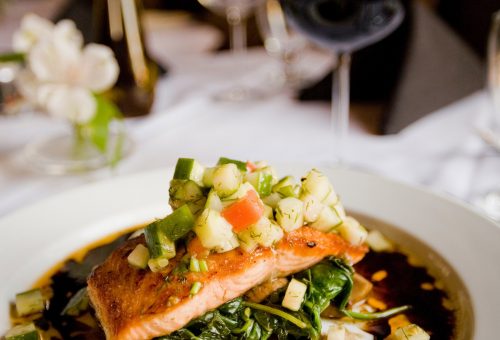
$16
Classic Cocktails,
Beer & Spirits
Why Is Pizza So Popular In Australia?
In the most recent decades, pizza has transcended its Italian beginnings to become a ubiquitous presence in the food scene of Australia, becoming a valued gastronomic staple in the culture of the country. Pizza has become a mainstay in the culture of people in Australia.
Hungry customers are enticed to come in by the mouthwatering aroma of freshly baked pizza, which wafts through the air and tempts their taste buds. The aroma of this fragrance can be detected in any location, from the crowded streets of the city to the solitary towns of the interior of the country.

That being said, what factors have contributed to the meteoric rise in popularity in the first place? The popularity of pizza has contributed to its status as a well-liked and regularly consumed dinner among people of all ages and walks of life in Australia.
What factors of pizza’s appeal have created this status? In this article, we delve into the cultural, sociological, and economic causes that have driven pizza to its treasured position in the hearts and bellies of Australians across the continent. Pizza has an important place in the diets of Australians. To put it another way, these are the elements that have contributed to pizza’s current standing.
Why Is Pizza So Popular In Australia?
Pizza’s popularity in Australia can be attributed to several factors, read this here:
- Cultural Diversity: Australia is a melting pot of cultures, and its culinary landscape reflects this diversity. Pizza’s versatility and adaptability make it appealing to people from various cultural backgrounds. Australian taste buds have embraced not only traditional Italian pizzas but also unique variations and fusion flavours.
- Casual Dining Culture: The laid-back and casual dining culture in Australia aligns perfectly with pizza consumption. Pizza is perceived as a convenient and sociable meal, suitable for gatherings with friends and family, as well as for quick lunches or dinners on the go.
- Urbanization and Busy Lifestyles: With increasing urbanization and hectic lifestyles, Australians often seek convenient dining options. Pizza fits the bill perfectly, offering a quick and satisfying meal that can be delivered to doorsteps or enjoyed at local pizzerias without the need for lengthy preparation or cleanup.
- Affordability: Pizza is often seen as an affordable dining option, making it accessible to people across different socioeconomic backgrounds. Its value for money, especially when compared to dining out at restaurants, contributes to its widespread popularity.
- Marketing and Branding: Pizza chains and independent pizzerias in Australia have invested heavily in marketing campaigns, promotions, and branding strategies. This has helped cement pizza’s position as a go-to choice for consumers, with familiar brands and enticing offers driving repeat purchases.
- Adaptation to Local Tastes: Pizza in Australia has evolved to cater to local tastes and preferences. While traditional Italian toppings like Margherita and Pepperoni remain popular, Australian pizzas often feature unique toppings such as BBQ chicken, pineapple, and local seafood, reflecting the nation’s culinary creativity.
- Convenience and Accessibility: The widespread availability of pizza through delivery services, takeaway outlets, and frozen pizza options in supermarkets ensures its accessibility to Australians across urban and rural areas. This convenience factor further contributes to its popularity as a go-to meal option.
Pizza’s status as a well-liked and widely available food option in Australia can be attributed to several factors, including cultural variety, lifestyle characteristics, cost, marketing efforts, and adaptation to local tastes.
What Do Australians Put On Pizza?
The different interests of the populace in terms of cuisine are reflected in the fact that Australians add a wide variety of toppings to the pizza that they order.
Even though traditional Italian toppings such as tomato sauce, mozzarella cheese, and basil are rather popular, pizzas in Australia frequently incorporate unconventional combinations and ingredients that are native to the country. These are some of the toppings that are frequently found on pizzas in Australia:
- BBQ Chicken: Grilled or shredded chicken marinated in barbecue sauce, often paired with red onions, bacon, and sometimes pineapple.
- Hawaiian: A controversial yet popular combination featuring ham and pineapple, sometimes with added bacon or capsicum (bell pepper).
- Supreme: A hearty combination typically includes pepperoni, Italian sausage, mushrooms, onions, capsicum (bell pepper), olives, and sometimes additional toppings like ham or bacon.
- Seafood: Pizzas topped with a variety of seafood such as prawns (shrimp), smoked salmon, calamari, mussels, and sometimes even fish fillets, often accompanied by garlic, herbs, and lemon.
- Meat Lovers: A meat-heavy pizza featuring a variety of meats such as pepperoni, ham, bacon, Italian sausage, and sometimes even steak or meatballs, topped with melted cheese and tomato sauce.
- Vegetarian: Catering to vegetarian preferences, these pizzas are topped with an array of vegetables such as mushrooms, capsicum (bell pepper), onions, olives, spinach, artichokes, and sometimes additional ingredients like eggplant or zucchini.
- Gourmet: Upscale pizzas often feature gourmet ingredients such as prosciutto, arugula (rocket), sun-dried tomatoes, goat cheese, caramelized onions, truffle oil, figs, or balsamic glaze, appealing to more refined palates.
- Custom Creations: Australians are known for their creativity when it comes to pizza toppings, so custom creations are common. From spicy jalapeños to exotic toppings like kangaroo meat or prawns with avocado, the possibilities are endless.
There is a broad variety of pizza toppings that are popular among Australians. They frequently embrace both traditional favourites and novel combinations that are a reflection of their varied tastes and their willingness to experiment with different cuisines.
Conclusion
Pizza has solidified its position as a popular culinary staple in Australia, which is a reflection of the country’s diverse cultural influences, the culture of casual dining, and preference for convenience. As a result of the plethora of toppings, pizza can accommodate a wide range of tastes, from traditional Italian to innovative Australian.
Its low cost, the fact that it is easy to access, and the fact that it can be adapted to local preferences have all contributed to its popularity in both urban and rural areas.
Whether it’s as a quick lunch on the move, a communal meal, or a gourmet treat, the love of pizza among Australians is a reflection of the country’s innovation in the kitchen and its passion for having excellent food.
The effect of pizza in Australian culture extends far beyond the consumption of pizza, even though it is a staple food. Every pizza night with loved ones is a treasured opportunity to interact with one another and deepen friendships, regardless of whether it takes place at home or in a bustling pizzeria.
Additionally, pizza continues to be accessible and adaptable to a wide range of lifestyles because it can be prepared to accommodate a variety of dietary requirements, including gluten-free, vegan, vegetarian, and different options that are comparable.
The spirit of entrepreneurship that permeates the food industry in Australia is responsible for the fact that inventive pizza restaurants in the country are constantly experimenting with new flavours and methods. The pizza scene in Australia is thriving as a direct consequence of this.
Handmade pizzas cooked in wood-burning ovens and gourmet creations produced with quality ingredients are just two examples of the wide variety of gastronomic experiences that can be found in Australian pizzas.
In a nutshell, the sustained success of pizza in Australia may be attributed, in large part, to the fact that it can accommodate innovative flavours while still retaining its traditional appeal. Pizza is the unrivalled king of the eating scene in Australia, as it embodies the concepts of cosiness, culinary ingenuity, and an endless supply of delicious options for future generations.
Does Melbourne Have A Lot Of Restaurants?
With its many restaurants serving a wide variety of cuisines, the multicultural metropolis of Melbourne is well-known for its lively culture and diversified population. With an eclectic mix of restaurants serving cuisines from all over the world, this Australian city has become known as a paradise for foodies worldwide.
The diverse array of eateries in Melbourne, from hip cafes in obscure alleys to posh spots with views of the Yarra River, showcases the city’s multiculturalism.

Delve into the many cultural influences on Melbourne’s cuisine, the city’s unique gastronomic landscape, and the ever-evolving trends that contribute to its dynamic culinary reputation as we explore the multitude of restaurants in Melbourne. Restaurants in Melbourne are likely to satisfy any palate, whether you’re a native looking for a change of pace or just passing through on your way to somewhere else. Go on an adventure with us!
What Is A Restaurant?
One definition of a restaurant is a commercial institution that serves customers beverages and meals that have been prepared in advance. Restaurants offer more than simply a means of nutrition; they also provide a social and cultural experience by bringing people together to enjoy a meal together in a specific location. There is a vast range of restaurants, each with its unique offerings, styles, and atmospheres.
These restaurants can be anything from fast-food outlets and informal eateries to pricey fine-dining venues. Customers often place their orders for the meals they want from a menu, and the personnel at the restaurant are responsible for preparing and serving the food.
The idea of a restaurant has developed over several centuries, affected by cultural, economic, and gastronomic trends. As a result, restaurants have become an essential component of communities all over the world. In the process of shaping culinary landscapes and reflecting the varied tastes and preferences of their customers, restaurants play a significant role.
This is true regardless of whether the restaurant in question is a neighbourhood diner, an ethnic eatery, or a high-end gourmet destination.
Does Melbourne Have A Lot Of Restaurants?
Melbourne is well known for its thriving and varied restaurant scene, which features an abundance of establishments to suit a broad variety of palates. The city is widely acclaimed as a culinary enthusiast’s haven, with a diverse array of cuisines and cultures reflected in its dining scene. There is no shortage of restaurants in Melbourne, from fancy dining rooms to hip cafés, casual dining spots, international cuisines, and cutting-edge culinary adventures.
Some key features of Melbourne’s restaurant scene include:
- Culinary Diversity: Melbourne embraces cultural diversity, and this is evident in its diverse range of restaurants. You can find eateries serving cuisine from virtually every corner of the globe, reflecting the city’s multicultural population.
- Innovative Dining Experiences: The city is known for its innovative and progressive dining experiences. Many chefs and restaurateurs in Melbourne push culinary boundaries, creating unique and experimental dishes that contribute to the city’s reputation as a culinary hub.
- Coffee Culture: Melbourne is famous for its coffee culture, and numerous cafes and coffee shops dot the city’s streets. Locals and visitors alike enjoy the thriving coffee scene, with specialty coffee shops offering a variety of brews.
- Food Markets and Foodie Events: Melbourne hosts vibrant food markets, such as Queen Victoria Market, where fresh produce, gourmet delights, and international fare are showcased. Additionally, the city hosts food festivals and events that celebrate the culinary arts.
- Michelin-Starred and Acclaimed Restaurants: Melbourne boasts many Michelin-starred and highly acclaimed restaurants, offering top-notch dining experiences for those seeking gourmet and fine dining options.
- Neighbourhood Gems: Each neighbourhood in Melbourne has its unique character, and many local gems, including hidden laneway cafes and cosy bistros, contribute to the city’s diverse dining landscape.
Melbourne offers foodies a wide range of alternatives, whether they want to sample cuisines from around the world, dine in style, or just have a casual lunch in a hip neighbourhood. Due to its growing status as a culinary destination, the city continues to draw in visitors and people looking for exceptional dining experiences.
Why Does Melbourne Have A Lot Of Restaurants?
For many reasons, Melbourne has gained a reputation for having an abundance of eateries.
- Cultural Diversity: Melbourne is known for its multicultural population, with residents hailing from various parts of the world. This diversity is reflected in the city’s culinary scene, as different cultural communities contribute to a rich tapestry of flavours, ingredients, and cooking styles.
- Food Lover’s Culture: Melburnians have a deep appreciation for good food, and the city has cultivated a culture of food exploration and experimentation. The residents’ passion for diverse culinary experiences has fueled the growth of numerous restaurants catering to different tastes and preferences.
- Immigrant Influence: Many immigrants have brought their culinary traditions to Melbourne, establishing restaurants that showcase the authenticity of their native cuisines. This influence has significantly contributed to the city’s culinary diversity.
- Innovation and Creativity: Melbourne’s chefs and restaurateurs are known for their innovation and creativity. The city’s culinary landscape is characterised by a willingness to push boundaries, experiment with flavours, and introduce novel dining concepts, attracting food enthusiasts seeking unique experiences.
- Laneway Culture: Melbourne’s laneways and alleys are integral to its restaurant scene. These hidden gems house quirky cafes, bistros, and eateries, creating an intimate and atmospheric dining experience. The laneway culture has added charm and uniqueness to Melbourne’s culinary offerings.
- Coffee Culture: Melbourne has a thriving coffee culture, with an abundance of cafes and specialty coffee shops. The coffee scene contributes to the city’s reputation as a haven for food and beverage enthusiasts.
- Event and Festival Culture: The city hosts various food festivals, events, and markets that celebrate gastronomy. These gatherings attract foodies and provide a platform for chefs and restaurateurs to showcase their talents.
- Economic Prosperity: Melbourne’s economic prosperity has created a conducive environment for the growth of the restaurant industry. The city’s residents, with disposable income, are inclined to explore diverse dining options, leading to a thriving restaurant scene.
- Recognition and Awards: Melbourne’s restaurants have gained national and international recognition, with several establishments receiving prestigious awards. This acknowledgment has further elevated the city’s status as a culinary destination.
Melbourne’s unique restaurant culture is largely the result of a confluence of factors, including a strong immigrant influence, a dynamic food culture, a predilection for innovation, and cultural variety. The city’s culinary culture is always changing and providing both residents and visitors with a lively and varied selection of dining options.
Conclusion
Melbourne is known as a culinary metropolis and a world-renowned foodie destination, and it shows in its enormous restaurant scene.
A vibrant and varied food scene defined by innovative concepts, a devotion to superior ingredients, and a rich tapestry of flavours defines the city. Melbourne is home to a wide variety of eateries, from trendy alley cafes to highly acclaimed fine dining establishments, so there’s sure to be something to satisfy any palate.
The diverse and unique culinary culture in Melbourne is a reflection of the city’s cosmopolitan population and the worldwide influences felt in its eateries. The multiculturalism of Melbourne is highly prized. If you’re a foodie looking for a place to explore and enjoy a wide range of cuisines, from traditional fare to more experimental fare, Melbourne is the place for you.
Looking for a fine restaurants in Melbourne? Look no further than, michelin star restaurants Melbourne!
What Should I Order From A Restaurant On Keto?
When beginning a ketogenic diet, it is common to be required to make conscious decisions regarding the items that you consume, even when you are eating out. Although the idea of navigating restaurant menus may appear to be intimidating, you need not be afraid of it. With a little bit of information and some smart planning, you will be able to enjoy tasty meals while still adhering to your keto nutritional goals.
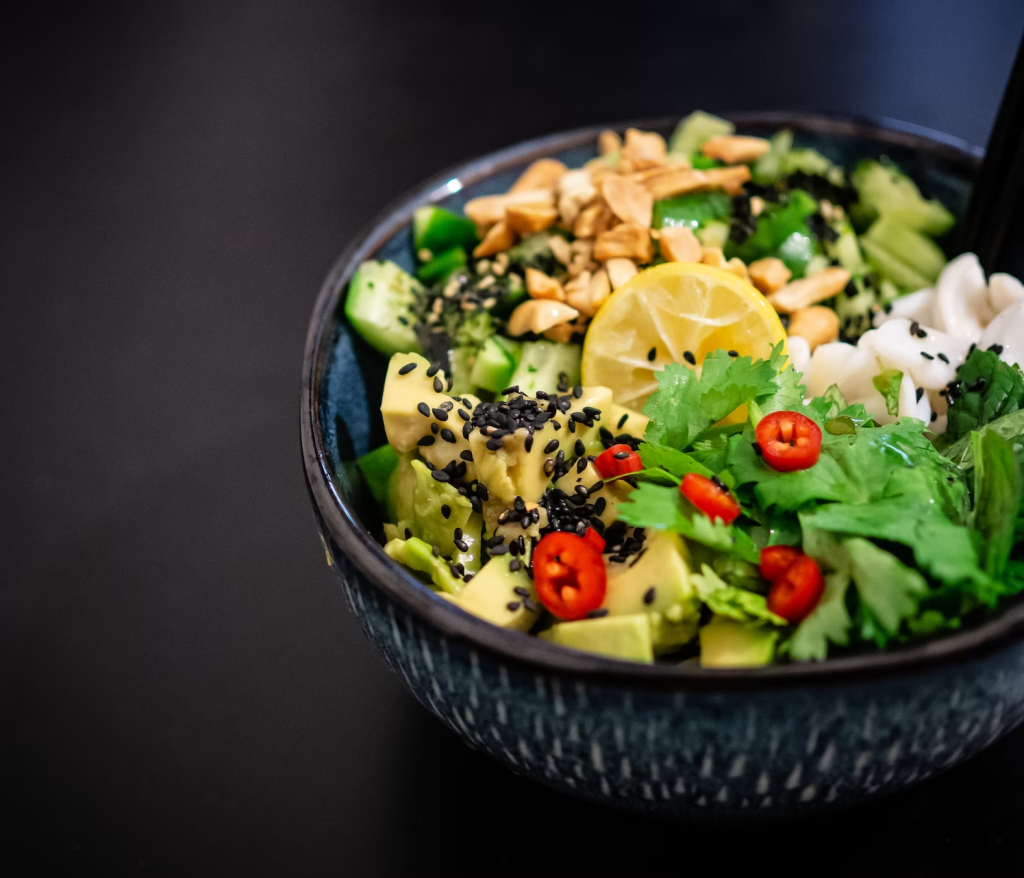
Throughout this guide, we will take you through the process of ordering keto-friendly dishes at restaurants. We will provide you with advice and suggestions to ensure that your dining experience is not only delicious but also in line with your low-carb lifestyle expectations. When it comes to preparing a delicious ketogenic meal, we have you covered in every aspect, from selecting the appropriate appetisers to understanding the lingo used on the menu.
Join us as we go into the mysterious world of hidden carbs and unearth the treasures that are in line with your keto quest as we explore the wide world of restaurant cuisine. Taking one mouthwatering keto mouthful at a time, let’s make your time spent dining out into an experience that is both smooth and delightful.
What Should I Order From A Restaurant On Keto?
Foods that are low in carbohydrates, high in fat, and moderate in protein are the cornerstones of the ketogenic diet. When dining out, keep these general rules and menu ideas in mind for keto-friendly options:
Starters/Appetizers
- Opt for salads with non-starchy vegetables and a high-fat dressing (avoid sugary dressings).
- Choose buffalo wings (without breading) with a low-carb sauce.
- Enjoy a plate of smoked salmon or shrimp cocktail.
Main Courses
- Select grilled or roasted meats such as steak, chicken, or fish.
- Choose fatty cuts of meat like ribeye steak or salmon.
- Look for dishes with creamy sauces made from sources like cheese, butter, or cream.
- Customize your order to replace high-carb sides (potatoes, rice, pasta) with extra vegetables or a side salad.
Burgers/Sandwiches
- Order a bunless burger or ask for a lettuce wrap instead of a bun.
- Add high-fat toppings like cheese, bacon, and avocado.
Asian Cuisine
- Opt for stir-fried dishes with meat and low-carb vegetables.
- Choose protein-rich options like beef or chicken satay without sugary sauces.
Mexican Cuisine
- Go for fajitas with extra guacamole and sour cream.
- Order a taco salad without the shell or tortilla chips.
Italian Cuisine
- Select dishes with protein and non-starchy vegetables, such as grilled chicken with vegetables or a bunless burger.
- Substitute zucchini noodles (zoodles) for traditional pasta.
Fast Food
- Order grilled chicken or burgers without the bun.
- Opt for salads with high-fat dressings, and avoid croutons or sugary toppings.
Sides
- Choose sautéed or roasted vegetables instead of starch-heavy sides.
- Enjoy a side of creamed spinach or a Caesar salad without croutons.
Desserts
- If available, go for sugar-free or dark chocolate desserts.
- Consider a cheese platter for a savoury and satisfying end to your meal.
Communication with the staff at the restaurant regarding your dietary choices is the best way to ensure that the food you choose is compatible with your ketogenic diet. Additionally, be wary of sauces that may include carbohydrates or sugars that are concealed from view.
When you go out to restaurants, as long as you are creative and mindful, you might be able to find a broad variety of delicious options that are suitable for people following the ketogenic diet.
What Type Of Cuisine Is Best For Keto?
Since a ketogenic diet prioritises protein, healthy fats, and low-carbohydrate foods, it pairs well with several different cuisines. Discover a variety of keto-friendly dishes:
Steakhouse/Grill
- Grilled meats like steak, lamb, and pork are staples.
- Add high-fat toppings like butter, cheese, or creamy sauces.
- Sides can include non-starchy vegetables or a side salad.
Seafood/Fish
- Fatty fish such as salmon, mackerel, and tuna are excellent choices.
- Shellfish like shrimp and crab are low in carbs.
- Seafood dishes often include healthy fats and protein.
Mexican (with modifications)
- Fajitas with extra guacamole and sour cream.
- Taco salads without the shell or tortilla chips.
- Choose protein-rich options like grilled chicken or beef.
Italian (with modifications)
- Zucchini noodles (zoodles) instead of traditional pasta.
- Dishes with meat, cheese, and non-starchy vegetables.
- Salads with olive oil and vinegar-based dressings.
Greek/Mediterranean
- Gyro or grilled meats with tzatziki sauce.
- Greek salads with olives, feta cheese, and olive oil.
- Grilled vegetables and fish.
Japanese/Sushi (with modifications)
- Sashimi (raw fish without rice).
- Rolls wrapped in seaweed (nori) without rice (sashimi rolls).
- Miso soup without added sugars.
Indian (with modifications)
- Tandoori dishes with grilled meat.
- Curries with coconut milk and low-carb vegetables.
- Avoid rice and opt for cauliflower rice as a substitute.
American/Diner (with modifications)
- Bunless burgers or lettuce-wrapped burgers.
- Grilled chicken or fish with vegetables.
- Side salads with high-fat dressings.
Buffet/Salad Bar
- Build a salad with leafy greens, non-starchy vegetables, nuts, seeds, and high-fat dressings.
- Choose grilled meats and avoid breaded or fried options.
Fast Food (with modifications)
- Grilled chicken options without the bun.
- Salads with high-fat dressings (avoid sugary dressings).
- Burgers without the bun and added low-carb toppings.
When you are eating out on a ketogenic diet, it is really important to be on the lookout for foods that are high in carbohydrates, hidden sweeteners, and sauces. The keys to a successful ketogenic diet are to make sure that the food you buy is tailored to your preferences, to communicate your dietary restrictions clearly, and to choose products that are unprocessed and complete. This is true regardless of the type of cuisine you purchase.
Conclusion
Going out to eat while adhering to a ketogenic diet is not only possible, but it can also be a wonderful and satisfying experience if you choose the right foods. When you are new to the ketogenic diet and want to know what foods are compatible with it, you can eat anything you want without ever having to worry about exceeding your carb limit. This is because the ketogenic diet allows you to consume more carbohydrates than you consume.
Be sure to order items that are high in healthy fats, lean proteins, and vegetables while you are dining out on a ketogenic diet. During the process of personalising your order, replace components that are high in carbohydrates with those that are keto-friendly.
Take zoodles as an alternative to traditional pasta, or go for a vegetarian burger instead of a standard pasta. It is necessary to have open communication with the staff at the restaurant to accommodate your dietary preferences.
Whether you want to indulge in a succulent steak that has been cooked to perfection, delight in fresh seafood, or try out cuisines from around the world with some modifications, there is a broad selection of options available to you to satisfy your appetites for ketogenic cuisine.
Be aware of hidden sweeteners and sauces that can contain carbohydrates, but don’t let yourself get carried away with the delightful adventure of finding dishes that are keto-friendly.
A ketogenic diet can be a practical and enjoyable component of your healthy living provided you are mindful and imaginative while you are eating out on a ketogenic diet. In my opinion, you should look over the menus, do some study, and then take pleasure in the numerous and delectable keto-friendly meal alternatives.
Are you looking for more information? Simply hop over to this website today!
Is Pure Harvest Coconut Milk Good For You?
In recent years, the health and wellness trend has prompted many individuals to explore alternative and plant-based food options. Coconut milk, derived from the meat of coconuts, has gained popularity as a versatile and dairy-free substitute. Among the various brands available, Pure Harvest Coconut Milk stands out for its commitment to providing a pure and natural product.

This article delves into the nutritional aspects of Pure Harvest Coconut Milk to determine whether it is a healthy addition to your diet.
Pure Harvest Coconut Milk
Pure Harvest Coconut Milk prides itself on being free from additives, preservatives, and artificial flavours. It is a non-dairy alternative that caters to individuals with lactose intolerance, vegans, and those seeking a nutritious milk substitute. Before we delve into its nutritional profile, it’s essential to understand how this coconut milk is made.
Pure Harvest Coconut Milk is crafted by extracting the liquid from the flesh of mature coconuts. This process involves grating the coconut meat, soaking it in water, and then squeezing out the milk. Unlike traditional dairy milk, coconut milk is naturally lactose-free and is often chosen for its unique flavour and potential health benefits.
Nutritional Composition of Pure Harvest Coconut Milk
Let’s break down the nutritional components of Pure Harvest Coconut Milk to gain insights into its health implications.
Calories and Macronutrients:
- A one-cup serving of Pure Harvest Coconut Milk typically contains around 45-50 calories.
- The macronutrient profile includes approximately 4 grams of fat, 1.5 grams of saturated fat, 0 grams of cholesterol, 0 grams of protein, and 1 gram of carbohydrates.
Healthy Fats:
- The majority of the fat in coconut milk is in the form of medium-chain triglycerides (MCTs). MCTs are known for their rapid absorption and conversion into energy, making them a potential source of quick fuel for the body.
Vitamins and Minerals:
- Coconut milk is a good source of essential vitamins and minerals, including potassium, magnesium, and iron. These micronutrients play crucial roles in maintaining proper bodily functions, such as nerve transmission, muscle contraction, and oxygen transport.
Antioxidants:
- Coconut milk contains antioxidants, such as phenolic compounds, which may help neutralize free radicals in the body. Antioxidants are essential for combating oxidative stress, which is linked to various chronic diseases and aging.
Dietary Fiber:
- While coconut milk is not a significant source of dietary fibre, it still contributes a small amount, aiding in digestion and promoting a sense of fullness.
Health Benefits of Pure Harvest Coconut Milk
Now that we’ve examined the nutritional composition of Pure Harvest Coconut Milk, let’s explore the potential health benefits associated with its consumption.
- Heart Health:
The saturated fat content in coconut milk has raised concerns in the past, as excessive saturated fat intake has been linked to cardiovascular issues. However, emerging research suggests that the type of saturated fat in coconut milk, specifically lauric acid, may have neutral or even positive effects on heart health by raising levels of HDL (good) cholesterol.
- Weight Management:
The medium-chain triglycerides (MCTs) found in coconut milk have been studied for their potential role in weight management. Some research suggests that MCTs can increase feelings of fullness and may contribute to weight loss when incorporated into a balanced diet.
- Bone Health:
Coconut milk contains essential minerals like phosphorus and manganese, which play a crucial role in maintaining bone health. Phosphorus is integral to bone structure, while manganese contributes to bone formation and mineralization.
- Digestive Health:
The small amount of dietary fibre in coconut milk can support digestive health by promoting regular bowel movements and preventing constipation.
- Immune Support:
The antioxidants present in coconut milk may contribute to immune system support by helping the body combat oxidative stress and inflammation.
Considerations and Potential Concerns
While Pure Harvest Coconut Milk offers various nutritional benefits, it’s essential to consider individual dietary needs and any potential concerns associated with its consumption.
- Caloric Density:
Due to its caloric density, individuals on calorie-restricted diets should be mindful of their portion sizes to avoid excessive calorie intake.
- Allergies and Sensitivities:
Individuals with allergies or sensitivities to coconut should exercise caution and choose alternative milk options.
- Added Ingredients:
While Pure Harvest Coconut Milk prides itself on purity, it’s always advisable to check the ingredient list for any added stabilizers, thickeners, or sweeteners.
- Balanced Diet:
Coconut milk should be viewed as part of a balanced diet, and its consumption should be complemented by a variety of nutrient-dense foods.
Can Coconut Quench Thirst?
Coconut water, not to be confused with coconut milk, is a clear liquid found inside green coconuts. It is often hailed as a natural and refreshing beverage, and many people find it satisfying in terms of quenching thirst. Here are several reasons why coconut water is considered effective in alleviating thirst:
- Hydration: Coconut water is a natural source of electrolytes, such as potassium, sodium, magnesium, and calcium. These electrolytes are essential for maintaining proper fluid balance in the body. When you’re thirsty, you’re often in need of hydration, and coconut water can help replenish fluids and electrolytes.
- Low in Calories: Coconut water is relatively low in calories compared to many sweetened beverages, making it a healthier choice for hydration. It’s a suitable option for those who are looking to stay hydrated without consuming excessive calories or added sugars.
- Natural Taste: Coconut water has a mild, slightly sweet taste that many people find enjoyable. The natural flavour can make it a more appealing choice for those looking to hydrate without the intense sweetness found in some commercial beverages.
- Rich in Minerals: In addition to being hydrating, coconut water provides small amounts of essential minerals. For example, potassium is crucial for muscle function, and its presence in coconut water can be beneficial, especially after exercise or physical activity.
While coconut water is a good option for hydration, it’s important to note that coconut milk, which is a different product, is not as effective for quenching thirst. Coconut milk is made from the grated flesh of mature coconuts and is more calorically dense due to its higher fat content. It is often used in cooking and as a dairy milk substitute in various recipes.
Ultimately, the effectiveness of coconut water in quenching thirst varies from person to person. Some individuals find it refreshing and satisfying, while others may prefer different beverages. Additionally, individual hydration needs depend on factors such as climate, physical activity, and overall health. As with any dietary choice, moderation is key, and it’s essential to listen to your body’s signals regarding thirst and hydration.
Conclusion
In conclusion, Pure Harvest Coconut Milk can be a nutritious and flavorful addition to your diet, offering a range of health benefits. Its unique nutritional profile, including healthy fats, vitamins, minerals, and antioxidants, makes it a compelling choice for individuals seeking a dairy-free alternative. However, like any food product, moderation is key, and it’s important to consider individual dietary needs and preferences.
As with any dietary decision, it’s advisable to consult with a healthcare professional or nutritionist to ensure that Pure Harvest Coconut Milk aligns with your specific health goals and requirements. Whether you enjoy it in your morning coffee, use it in cooking, or pour it over your cereal, Pure Harvest Coconut Milk stands as a versatile and potentially healthful choice in the realm of plant-based milk alternatives.
Check some products of Pure Harvest such as coco quench.
What Are Popular Seafood Dishes?
Seafood has been a culinary delight for centuries, offering a wide array of flavours, textures, and cultural significance. From the delicate sashimi of Japan to the hearty bouillabaisse of France, seafood dishes are beloved across the globe. why not find out more by reading the content below?

What Are Popular Seafood Dishes?
In this article, we’ll delve into some of the most popular seafood dishes, each with its unique preparation, ingredients, and regional flair.
1. Sushi and Sashimi (Japan)
Sushi: A quintessential Japanese dish, sushi consists of vinegared rice combined with various ingredients such as raw or cooked seafood, vegetables, and occasionally tropical fruits. It’s often wrapped in seaweed (nori) or served in bite-sized mounds.
Sashimi: While similar to sushi, sashimi is distinct in that it consists solely of thinly sliced raw fish or seafood. It’s typically served with soy sauce, wasabi, and pickled ginger.
2. Paella (Spain)
Paella: Hailing from the coastal region of Valencia, Spain, paella is a flavorful rice dish cooked with a blend of saffron, paprika, garlic, and a variety of proteins. Seafood paella prominently features ingredients like shrimp, mussels, clams, and sometimes squid, creating a vibrant, aromatic dish.
3. Bouillabaisse (France)
Bouillabaisse: Originating from the port city of Marseille, bouillabaisse is a rich and hearty fish stew. It’s made with a medley of fresh fish, shellfish, tomatoes, garlic, onions, and a fragrant blend of herbs. The broth is typically served with rouille, a garlicky mayonnaise-like sauce.
4. Ceviche (Peru)
Ceviche: This zesty and refreshing dish is a staple of Peruvian cuisine. It involves marinating fresh raw fish, usually sea bass or snapper, in lime or lemon juice. The acid “cooks” the fish, resulting in a tangy, citrus-infused flavour. Ceviche is often garnished with cilantro, red onions, and chilli peppers.
5. Fish and Chips (United Kingdom)
Fish and Chips: A beloved British classic, fish and chips feature battered and deep-fried fish, traditionally cod or haddock, served with thick-cut fries. It’s often accompanied by mushy peas and tartar sauce, creating a comforting and satisfying dish.
6. Lobster Thermidor (France)
Lobster Thermidor: A luxurious French dish, Lobster Thermidor involves the creamy, cheese-infused preparation of lobster meat. The cooked lobster is mixed with a velvety sauce made from egg yolks, brandy, and mustard, then returned to the shell and broiled to perfection.
7. Grilled Octopus (Greece)
Grilled Octopus: A staple of Mediterranean cuisine, grilled octopus showcases the tender, flavorful nature of this sea creature. It’s typically marinated in olive oil, lemon juice, garlic, and oregano, then grilled to achieve a smoky, charred exterior and a succulent interior.
8. New England Clam Chowder (United States)
Clam Chowder: Hailing from the northeastern United States, clam chowder is a creamy soup featuring tender clams, potatoes, onions, and smoky bacon. It’s often seasoned with herbs and spices, creating a comforting and hearty dish that’s perfect for chilly evenings.
9. Shrimp and Grits (United States)
Shrimp and Grits: A Southern U.S. favourite, this dish pairs succulent shrimp with creamy, buttery grits. The shrimp are typically sautéed with garlic, bacon, and spices, creating a harmonious blend of flavours and textures.
10. Thai Green Curry with Prawns (Thailand)
Green Curry: Thailand’s famed green curry is a vibrant, aromatic dish made with a fragrant paste of green chillies, lemongrass, and other spices. Prawns are added to the simmering curry, absorbing the rich, spicy flavours and creating a truly indulgent meal.
Seafood Restaurants To Visit In Melbourne
Melbourne, Australia, is renowned for its vibrant culinary scene, and seafood enthusiasts are in for a treat. From elegant fine dining establishments to casual eateries with a focus on fresh catches, Melbourne has it all. Here are some of the top seafood restaurants in the city:
1. Vue de Monde
Location: Rialto Towers, 525 Collins St, Melbourne VIC 3000
Overview: Vue de Monde is an iconic fine dining restaurant located on the 55th floor of the Rialto Tower, offering breathtaking views of Melbourne. The seafood selection is impeccable, featuring dishes like Moreton Bay bug tail with sea urchin and abalone with miso and apple.
2. The Atlantic
Location: Crown Entertainment Complex, 8 Whiteman St, Southbank VIC 3006
Overview: Situated in the heart of the Crown complex, The Atlantic boasts an extensive seafood menu. Guests can enjoy a wide range of fresh oysters, prawns, and an array of fish cooked to perfection. The elegant, modern decor complements the dining experience.
3. Stokehouse
Location: 30 Jacka Blvd, St Kilda VIC 3182
Overview: Overlooking St Kilda Beach, Stokehouse offers a relaxed yet stylish atmosphere. The menu emphasizes locally sourced, sustainable seafood. Diners can indulge in dishes like the whole flounder with brown butter and capers.
4. Fisherman’s Wharf Tavern
Location: 36 New Quay Promenade, Docklands VIC 3008
Overview: Situated in the picturesque Docklands area, Fisherman’s Wharf Tavern is known for its casual, family-friendly ambience. The menu features an array of seafood options, from classic fish and chips to gourmet seafood platters.
5. Hunky Dory Fish & Chips
Location: Various locations, including 181 Bay St, Port Melbourne VIC 3207
Overview: For a more casual seafood experience, Hunky Dory is a popular choice. Specializing in fish and chips, they offer a variety of fish, calamari, and other seafood, all cooked to perfection in a light, crispy batter.
6. The Lui Bar
Location: Rialto Towers, 525 Collins St, Melbourne VIC 3000
Overview: Another gem located in the Rialto Towers, The Lui Bar provides a sophisticated setting to enjoy cocktails and an array of seafood snacks. The rooftop location offers stunning views of the city skyline.
7. Paper Fish
Location: 30 Jacka Blvd, St Kilda VIC 3182
Overview: Located in St Kilda, Paper Fish offers a relaxed beachside atmosphere with a focus on sustainable seafood. Guests can savour dishes like the grilled octopus salad or a classic fish burger.
8. The Fish Shop
Location: 22 Toorak Rd, South Yarra VIC 3141
Overview: Nestled in South Yarra, The Fish Shop combines a seafood market with an adjoining restaurant. Diners can choose their seafood from the market and have it cooked to their preference.
9. Sea Life Melbourne Bistro
Location: Sea Life Melbourne Aquarium, King St, Melbourne VIC 3000
Overview: This unique dining experience is located within the Sea Life Melbourne Aquarium. With the stunning backdrop of marine life, diners can enjoy a variety of seafood dishes, including fresh catches of the day.
Conclusion
Seafood transcends borders, offering a diverse and delectable array of dishes that cater to various tastes and preferences. From the delicate flavours of Japanese sushi to the hearty stews of French bouillabaisse, each dish celebrates the bounties of the ocean in its unique way.
Exploring these popular seafood dishes not only introduces us to different culinary traditions but also allows us to appreciate the rich tapestry of flavours that the world’s oceans have to offer. So, the next time you sit down to a seafood feast, remember the centuries of tradition and innovation that have brought these dishes to your plate.
Melbourne’s seafood scene is a testament to the city’s love for fresh, high-quality ingredients. Whether you’re in the mood for an upscale fine dining experience or a casual fish and chips by the beach, Melbourne has something to satisfy every seafood craving. These restaurants not only showcase the best of Australian seafood but also offer diverse international influences that make Melbourne’s culinary landscape truly exceptional.
What Is The Most Popular Thai Food?
Thailand, a land of smiles, is equally renowned for its vibrant culture as it is for its delectable cuisine. Thai food is a symphony of flavours, blending sweet, sour, salty, and spicy in perfect harmony. From fragrant curries to zesty street food, Thailand offers a diverse palate that has captivated taste buds worldwide. In this article, we delve into the heart of Thai cuisine to uncover the most popular dishes that have become global sensations.

Thai cuisine is a delightful mosaic of aromatic herbs, fresh ingredients, and bold spices. Its popularity extends far beyond the borders of Thailand, with Thai restaurants dotting cities across the globe. Each dish is a testament to the country’s rich history, influenced by the culinary traditions of China, India, and other Southeast Asian nations.
Pad Thai: The Iconic Street Food
No discussion about popular Thai food is complete without mentioning Pad Thai. This iconic dish is a quintessential representation of Thailand’s street food culture. Stir-fried rice noodles, bathed in a tantalizing sauce of tamarind, fish sauce, and chilli, are cooked to perfection with prawns, tofu, or chicken.
Garnished with peanuts, fresh lime, and a sprinkle of chilli flakes, Pad Thai is a symphony of textures and tastes, delivering a sweet, sour, and spicy sensation with each bite.
Green Curry: The Spicy Euphoria
Among the many Thai curries, the Green Curry holds a special place in the hearts of both locals and international connoisseurs. Made from a blend of green chillies, lemongrass, and other fragrant herbs, it is cooked with succulent pieces of chicken, beef, or tofu. The result is a spicy, aromatic stew that awakens the senses. Served with jasmine rice, Green Curry is a culinary adventure that balances fiery heat with a soothing coconut milk base.
Tom Yum Goong: A Soup to Warm the Soul
Tom Yum Goong is a testament to Thailand’s mastery of balancing flavours. This hot and sour soup combines shrimp, mushrooms, tomatoes, and a variety of aromatic herbs. Infused with the tanginess of lime juice and the subtle sweetness of coconut milk, Tom Yum Goong is an explosion of taste sensations. The dish is a dance of contrasts, with the sourness of the lime and the heat of chillies creating a harmonious symphony.
Mango Sticky Rice: A Sweet Culmination
While Thai cuisine is known for its bold flavours, it also offers a delightful range of desserts. Among these, Mango Sticky Rice stands out as a perennial favourite. Ripe, fragrant mango slices are served alongside sweet, sticky rice drenched in coconut milk. The combination of creamy, sweet, and slightly salty flavours creates a heavenly treat that satisfies the sweet tooth and leaves a lasting impression.
Som Tum: The Zesty Green Papaya Salad
Som Tum is a refreshing salad that perfectly encapsulates the Thai penchant for combining diverse flavours. Made from shredded green papaya, cherry tomatoes, green beans, and peanuts, it’s a crisp, crunchy delight. The dressing, a concoction of lime juice, fish sauce, chilli, and palm sugar, lends a tantalizing blend of sweet, sour, and spicy notes. Som Tum is a burst of freshness, offering a delightful contrast to heartier dishes.
Massaman Curry: A Symphony of Flavors
Hailing from Southern Thailand, Massaman Curry is a unique fusion of Thai and Middle Eastern influences. Rich and aromatic, this curry features a medley of spices such as cinnamon, cardamom, and cloves, combined with coconut milk, potatoes, and tender chunks of meat. The result is a velvety, flavorful dish that tantalizes the taste buds with its complex, layered flavours.
Thai Street Food: An Endless Array
While specific dishes like Pad Thai and Tom Yum Goong have gained international acclaim, Thai street food as a whole is a treasure trove of culinary wonders. From fiery green curry to aromatic satay skewers, bustling street markets offer an endless array of mouthwatering options. Vendors skillfully whip up dishes to cater to every palate, creating an unforgettable experience for locals and tourists alike.
Thai Restaurant To Visit In Melbourne
Melbourne, Australia, is a city known for its diverse and vibrant food scene. Among the plethora of international cuisines on offer, Thai cuisine stands out for its bold flavours and aromatic dishes. If you’re in Melbourne and craving an authentic taste of Thailand, here are some top Thai restaurants that promise to transport your taste buds to the bustling streets of Bangkok.
Chin Chin
Address: 125 Flinders Ln, Melbourne VIC 3000
Website: chinchinrestaurant.com.au
Chin Chin is a celebrated Melbourne institution, known for its dynamic and modern take on Thai cuisine. Located in the heart of the city, this vibrant eatery boasts a lively atmosphere and an extensive menu featuring everything from spicy green curry to crispy barramundi. Be prepared for a wait, as this popular spot doesn’t take reservations, but the food is well worth it. Don’t miss their signature dishes like the Pad Seuw and Massaman Curry.
Longrain
Address: 44 Little Bourke St, Melbourne VIC 3000
Website: longrain.com/melbourne
Longrain is a sophisticated Thai-inspired restaurant nestled in a beautifully converted warehouse in the heart of Melbourne’s Chinatown. With its chic, urban ambience, Longrain offers a contemporary twist on traditional Thai flavours. Their shared-style dining encourages communal feasting, allowing you to sample a variety of dishes. Highlights include the twice-cooked duck and the eggplant yellow curry.
Cookie
Address: Level 2/252 Swanston St, Melbourne VIC 3000
Website: cookie.net.au
Cookie is a unique Thai-inspired restaurant that’s part of the iconic Melbourne institution, The Toff in Town. While not exclusively Thai, Cookie offers a diverse menu influenced by various Asian cuisines, including Thai. The vibrant and eclectic space features an extensive drinks menu and an array of dishes that range from classic green curry to inventive fusion creations. The restaurant’s rooftop bar also offers stunning views of the city.
Jinda Thai
Address: 1-7 Ferguson St, Abbotsford VIC 3067
Website: jindathai.com.au
For a more traditional Thai dining experience, Jinda Thai in Abbotsford is a must-visit. Tucked away in a quaint neighbourhood, this family-owned restaurant exudes authenticity. The menu boasts a wide selection of classic Thai dishes, from the fragrant Tom Yum Goong soup to the flavorful Pad Kra Pao. With its warm and welcoming ambience, Jinda Thai is the perfect place to savour the comforting flavours of Thailand.
Son in Law
Address: 56 Johnston St, Fitzroy VIC 3065
Website: soninlaw.com.au
Son in Law in Fitzroy offers a playful twist on traditional Thai cuisine. With a menu inspired by home-cooked Thai dishes, this cozy restaurant serves up dishes bursting with flavour and creativity. Their namesake dish, “Son in Law Eggs,” is a must-try, as are their inventive cocktails and desserts. The restaurant’s casual and friendly atmosphere makes it an excellent choice for a relaxed meal with friends.
Looking for more? Check bangkok terrace restaurant camberwell.
Conclusion
Thai cuisine is a journey through a symphony of flavours, where each dish tells a story of culture, history, and culinary artistry. From the iconic Pad Thai to the spicy allure of Green Curry, and the refreshing Som Tum, Thai food is a celebration of contrasts and harmonies.
Whether exploring the bustling streets of Bangkok or savouring a meal in a cozy Thai restaurant halfway around the world, the flavours of Thailand leave an indelible mark on the palate and the heart. It’s no wonder that Thai cuisine has become a global phenomenon, inviting people from all walks of life to partake in this delectable culinary adventure.
Melbourne’s culinary landscape is a treasure trove for food enthusiasts, and its Thai restaurants are no exception. These establishments offer a diverse range of experiences, from chic urban eateries to cozy family-owned gems. Whichever you choose, be prepared to embark on a delectable journey through the flavours of Thailand, right in the heart of Melbourne. Enjoy your culinary adventure!
Is A Kebab Healthy?
Kebabs are a widely popular dish, cherished for their tantalizing flavours and diverse preparations. Originating from the Middle East, this culinary delight has spread its influence across the globe, adapting to local tastes and preferences.
While kebabs are beloved for their taste, there’s an ongoing debate about their nutritional value. In this article, we will delve into the components of a kebab, explore its potential health benefits, and discuss how to make it a more nutritious choice.

The Anatomy Of A Kebab
Protein-Packed Goodness
At the heart of every kebab is the protein-rich core. Whether it’s lamb, chicken, beef, or even fish, the meat is a powerhouse of essential amino acids, which are crucial for muscle repair and overall bodily functions. It’s worth noting that leaner meats, like chicken or turkey, provide a lower fat content compared to red meats.
Abundant Vegetables
Kebabs often feature an array of vegetables, from bell peppers and onions to tomatoes and zucchini. These add a burst of colour, flavour, and essential nutrients like vitamins, minerals, and antioxidants.
The Marinade Magic
The marinade in kebabs is a pivotal component. Made from a blend of spices, herbs, and sometimes yogurt, it not only enhances the taste but also infuses the meat with a myriad of beneficial compounds. Garlic, for instance, offers anti-inflammatory properties, while turmeric provides powerful antioxidants.
Cooking Methods Matter
Grilling or baking kebabs is the preferred cooking method, as it requires less oil than frying. Grilling allows excess fat to drip away, resulting in a leaner, healthier dish. Moreover, the high heat preserves the nutrients in the vegetables.
The Health Benefits Of Kebabs
Protein Powerhouse
As mentioned earlier, kebabs are a superb source of high-quality protein. This is indispensable for the body’s growth, repair, and maintenance. It aids in muscle development, immune function, and the synthesis of enzymes and hormones.
Nutrient Density
When prepared with a variety of vegetables, kebabs become a nutrient-dense meal. They deliver an array of vitamins and minerals, such as vitamin C, potassium, and folate, essential for a well-functioning body.
Controlled Portions
Kebabs are typically served in controlled portions, making it easier to manage portion sizes and avoid overeating. This helps regulate calorie intake, which is crucial for maintaining a healthy weight.
Flavor Without Excess
The rich flavour profile of kebabs, derived from the marinade and grilling process, means that you can enjoy a satisfying meal without the need for excessive salt, sugar, or unhealthy fats.
Potential Concerns And How To Address Them
Sodium Content
One potential concern with kebabs is their sodium content, especially if they are marinated in high-sodium sauces. Opting for homemade marinades using herbs, citrus, and spices instead of commercially prepared ones can help control sodium levels.
Fat Content
Depending on the type of meat used, kebabs can sometimes be high in saturated fats. Choosing leaner cuts of meat, trimming visible fat, and incorporating more fish or poultry can mitigate this concern.
Carbohydrate Balance
Kebabs may be relatively low in carbohydrates, which can be a consideration for individuals who need to monitor their carb intake. Adding whole grains or legumes to the dish can provide a balanced macronutrient profile.
Where To Buy The Best Kebab In Melbourne
Melbourne, known for its diverse culinary scene, offers a plethora of options when it comes to finding the best kebabs in the city. Here are some highly recommended places where you can savour delicious kebabs:
Mama’s Kebabs
- Location: 362 Brunswick St, Fitzroy VIC 3065
- Why Visit: Mama’s Kebabs is known for its succulent, flavorful kebabs and generous portions. The friendly staff and cozy atmosphere add to the overall experience.
Gazi
- Location: 2 Exhibition St, Melbourne VIC 3000
- Why Visit: Gazi offers a modern take on traditional Greek cuisine, including mouthwatering kebabs. Their meats are marinated to perfection, and the restaurant’s stylish setting provides a great dining atmosphere.
Lambs on Queens
- Location: 296 Queens Parade, Clifton Hill VIC 3068
- Why Visit: As the name suggests, this spot is renowned for its lamb dishes, particularly its lamb kebabs. The meat is tender, well-seasoned, and served with fresh, complimentary sides.
Tiba’s Lebanese Restaurant
- Location: 504 Sydney Rd, Brunswick VIC 3056
- Why Visit: Tiba’s is a beloved establishment for Lebanese cuisine in Melbourne. Their kebabs are known for their authenticity and generous servings of tender meat with a medley of Middle Eastern flavours.
Fafa’s
- Location: Various locations across Melbourne
- Why Visit: Fafa’s specializes in Middle Eastern street food, and their kebabs are a standout. They offer a variety of fillings, including falafel and various meats, all wrapped in freshly baked bread.
Stalactites
- Location: 177/183 Lonsdale St, Melbourne VIC 3000
- Why Visit: Stalactites is a Melbourne institution for Greek cuisine. While they are famous for their souvlaki, their kebabs are equally exceptional. The atmosphere is bustling and the servings are hearty.
Tiba’s 2
- Location: 8 Pin Oak Cres, Flemington VIC 3031
- Why Visit: This is the second outpost of the popular Tiba’s Lebanese Restaurant. It offers the same quality and authenticity as the original, making it a must-visit for kebab enthusiasts.
Kebab Kingz
- Location: 618 Sydney Rd, Brunswick VIC 3056
- Why Visit: Kebab Kingz is known for its wide selection of kebabs, ranging from traditional lamb and chicken to more exotic options like camel. The flavours are bold and the prices are reasonable.
Remember to check the opening hours, as they may vary. Additionally, it’s always a good idea to read reviews or ask locals for their recommendations, as tastes can vary from person to person. Enjoy your kebab adventure in Melbourne! Check out the best kebab melbourne.
How Do You Eat A Kebab?
Eating a kebab is a delightful experience, but it can be a bit messy if you need to become more familiar with the process. Here’s a step-by-step guide on how to eat a kebab, whether it’s a wrap-style or skewered version:
Eating a Wrap-Style Kebab (e.g., Doner Kebab or Shawarma):
- Unwrap the Kebab: Start by unwrapping the kebab from its foil or paper wrapping. Be cautious as it might be hot.
- Hold It Correctly: Hold the kebab wrap with both hands, similar to how you would hold a burrito or a sandwich.
- Tilt and Take a Bite: Tilt the top of the kebab wrap toward your mouth and take a bite. Make sure to bite into all the layers, including the bread (typically pita or flatbread), meat, and various fillings.
- Rotate and Repeat: After taking a bite, rotate the kebab slightly to expose fresh layers of ingredients, and continue to take bites until you’ve enjoyed the entire wrap.
- Watch for Drips: Kebab wraps can be juicy, so be prepared for some drips. Holding it over a plate or napkin can help prevent messes.
Eating a Skewered Kebab (e.g., Shish Kebab or Souvlaki):
- Remove from the Skewer: If your kebab is served on a skewer, gently slide the meat and other ingredients off the skewer onto your plate. Be cautious, as the skewer might be sharp.
- Cut into Bite-Sized Pieces: Use a knife and fork to cut the kebab into bite-sized pieces. This makes it easier to eat and ensures you get a combination of meat and any accompanying vegetables.
- Enjoy with Accompaniments: Many kebabs are served with rice, salads, or sauces. Take bites of the kebab along with these side dishes for a complete and flavorful meal.
- Use Your Hands (Optional): Depending on the setting and your personal preference, you can also pick up the kebab pieces with your fingers and dip them into sauces or enjoy them as they are.
- Savour the Experience: Eating kebabs is meant to be a pleasurable experience, so savour the flavours and textures as you enjoy your meal.
Tips For Eating Kebabs:
- Be mindful of any bones or skewers in your kebab, especially with skewered versions.
- Experiment with different sauces and condiments to enhance the flavours.
- Don’t forget to use napkins or paper towels to keep your hands clean, as kebabs can be messy.
- If you’re sharing a platter of skewered kebabs with others, it’s customary to offer a piece to your dining companions before digging in.
Ultimately, eating a kebab is a hands-on experience that allows you to relish the blend of flavours and textures. Whether you prefer a wrap-style kebab or a skewered version, the key is to enjoy it to the fullest!
Conclusion
In conclusion, kebabs, when prepared thoughtfully, can indeed be a healthy addition to one’s diet. Their combination of protein, vegetables, and flavorful marinades offers a range of nutrients and health benefits. Individuals can enjoy this beloved dish without compromising their health goals by paying attention to the choice of meat, marinade ingredients, and cooking methods.
So, the next time you savour a kebab, relish not only its taste but also the nourishment it brings to your body.
How Do You Get Rid Of Heel Pain During Pregnancy?
Pregnancy is a beautiful phase in a woman’s life, but it can also bring about various discomforts and challenges, one of which is heel pain. As the body undergoes significant changes to accommodate the growing baby, it is not uncommon for women to experience discomfort in their feet, especially around the heels. This article aims to provide comprehensive insights and practical tips on how to alleviate and manage heel pain during pregnancy.

Understanding Heel Pain In Pregnancy
Heel pain during pregnancy is a common complaint among expectant mothers. It is primarily attributed to the added weight and pressure placed on the feet, which can lead to strain and inflammation. The hormonal changes, specifically the hormone relaxin, can also contribute to ligament laxity, affecting the arch and heel support. Read more by clicking heel pain pregnancy.
Tips For Alleviating Heel Pain
Heel pain can be a common issue, especially during pregnancy. The added weight and pressure on your feet can lead to discomfort. Here are some practical tips to help alleviate heel pain:
1. Supportive Footwear
Investing in proper footwear is crucial during pregnancy. Opt for shoes that provide adequate arch support and cushioning. Avoid high heels and opt for shoes with a low heel or, preferably, flats to distribute weight evenly.
2. Orthotic Inserts
Orthotic inserts or insoles can offer additional support and cushioning. These can be custom-made to address specific foot issues or purchased over the counter.
3. Regular Exercise
Engaging in low-impact exercises like swimming, prenatal yoga, or walking can help improve circulation and alleviate pressure on the feet. Be sure to consult with a healthcare provider before starting any new exercise routine.
4. Proper Posture
Maintaining good posture helps distribute weight evenly across the body, reducing strain on the feet. Stand tall, shoulders back, and avoid locking your knees.
5. Elevate Your Feet
Whenever possible, elevate your feet to promote better circulation and reduce swelling. Aim to keep them at or above heart level.
6. Cold Compress
Applying a cold compress or ice pack to the affected area can help reduce inflammation and provide relief from pain. Be sure to wrap the ice pack in a cloth to avoid direct skin contact.
7. Massage and Stretching
Gentle massaging of the feet and calves can help alleviate tension and improve blood flow. Stretching exercises for the calves and Achilles tendon can also be beneficial.
8. Maintain a Healthy Weight
Keeping a healthy weight during pregnancy is essential for minimizing excess pressure on the feet. Consult with a healthcare provider for personalized advice on weight management.
9. Avoid Prolonged Standing
Limit time spent standing, especially on hard surfaces. If your job requires extended periods of standing, consider using a footstool or cushioned mat.
10. Stay Hydrated
Adequate hydration supports overall health, including the health of your feet. Proper hydration helps maintain good blood flow and can reduce swelling.
Remember, while these tips can provide relief for mild to moderate heel pain, it’s important to consult with a healthcare provider if the pain is severe, persists for an extended period, or is accompanied by other concerning symptoms. They can provide personalized advice and address any underlying issues. Taking care of your feet during pregnancy can contribute to a more comfortable and enjoyable experience.
Home Remedies For Heel Pain
Heel pain can be a nagging discomfort, but there are several effective home remedies that can provide relief. Here are some natural methods to alleviate heel pain:
1. Epsom Salt Soak
A warm soak with Epsom salts can help relax muscles and alleviate pain. Fill a basin with warm water, add a handful of Epsom salts, and soak your feet for 15-20 minutes.
2. Arnica Gel
Arnica gel, a natural anti-inflammatory, can be applied topically to reduce pain and swelling. Follow the manufacturer’s instructions for application.
3. Turmeric
Turmeric, known for its anti-inflammatory properties, can be consumed in food or taken as a supplement (consult your healthcare provider for appropriate dosage).
4. Ginger Tea
Ginger has natural anti-inflammatory agents that can help reduce pain. Prepare ginger tea by steeping fresh ginger in hot water.
Remember, while these remedies can be effective for mild to moderate heel pain, it’s important to consult with a healthcare provider if the pain is severe, persists for an extended period, or is accompanied by other concerning symptoms. They can provide personalized advice and address any underlying issues.
When To Seek Professional Help
While the above tips and remedies can provide relief for mild to moderate heel pain, it’s essential to consult a healthcare provider if:
- Severe or Persistent Pain: If the heel pain is severe, doesn’t improve with home remedies, or persists for an extended period, it’s important to seek professional evaluation. This could be indicative of a more serious underlying condition.
- Signs of Infection: If you notice redness, warmth, or any signs of infection around the affected area, it’s important to consult a healthcare provider promptly. Infections can worsen without proper treatment.
- Swelling and Bruising: Significant swelling or unexplained bruising around the heel may be a sign of a more serious injury or condition that requires medical attention.
- Numbness or Tingling: If you experience numbness or tingling in your foot, especially in combination with heel pain, it may be indicative of a nerve-related issue that requires professional assessment.
- Changes in Gait or Walking Pattern: If the pain alters the way you walk or if you find it difficult to bear weight on the affected foot, it’s important to seek professional advice. Altered gait can lead to other musculoskeletal issues if not addressed.
- Previous Foot Issues: If you have a history of foot problems or conditions like plantar fasciitis, and the pain is worsening or not improving with home care, it’s advisable to consult a healthcare provider.
- Diabetes or Circulatory Disorders: Individuals with diabetes or circulatory disorders should be particularly vigilant about foot health. Any foot pain or discomfort should be evaluated promptly to prevent potential complications.
- Pregnancy Complications: If you’re pregnant and experiencing heel pain, it’s important to consult with your obstetrician or healthcare provider. They can offer specialized advice and ensure that the pain is not indicative of any pregnancy-related complications.
- Other Unexplained Symptoms: If the heel pain is accompanied by unexplained symptoms like fever, unexplained weight loss, or other systemic issues, it’s important to consult a healthcare provider for a comprehensive evaluation.
- History of Serious Injury: If you have a history of a significant foot injury, especially if it involves the heel, and you experience pain in the same area, it’s crucial to seek professional assessment to rule out any long-term complications.
Remember, early intervention and professional guidance are essential for addressing any potential underlying issues causing heel pain. A healthcare provider can provide a thorough evaluation, accurate diagnosis, and a tailored treatment plan to ensure a speedy and effective recovery.
Conclusion
Heel pain during pregnancy is a common discomfort that can be managed effectively with proper care and attention. By incorporating these tips and remedies into your routine, you can alleviate pain and ensure a more comfortable pregnancy journey. Remember to consult with your healthcare provider for personalized advice and to address any concerns regarding your foot health during pregnancy. With the right approach, you can enjoy this special time in your life with greater ease and comfort.
Why Do People Hire Limousines?
Limousines have always been seen as a representation of wealth and status. Everyone from A-list actors and actresses to newlyweds and honeymooners to corporate executives and prom-goers has experienced the appeal of a ride in a luxurious stretch limo. But why do people pay for the privilege of renting these expensive cars, which are typically reserved for celebrities and VIPs?
In this article, we explore the varied factors that have contributed to limousine services maintaining their high demand. In addition to the obvious social status boost that limos provide, we’ll also discuss their useful amenities, unique experiences, and other benefits. The appeal of these sophisticated automobiles never ceases to fascinate and invigorate people all over the world, whether they are used for special occasions or to merely enhance regular modes of transportation. So, let’s enter the world of limousines and find out why they continue to be so popular.
Why Do People Hire Limousines?
Limousine services are in high demand for a wide range of reasons that stem from people’s individual wants and demands. Some of the most typical occasions for limo hire are as follows navigate here:
- Special Occasions: Limousines are often associated with special events such as weddings, anniversaries, and prom nights. They add an element of elegance and luxury to these once-in-a-lifetime moments, making them even more memorable.
- VIP Treatment: Many people hire limousines to experience VIP treatment and personalized service. Limousine chauffeurs are known for their professionalism and attention to detail, ensuring passengers feel like celebrities for the day.
- Convenience: Limousines provide hassle-free transportation. Whether it’s getting to and from the airport, a corporate event, or a night out on the town, limousines offer a comfortable and stress-free way to travel, allowing passengers to relax and enjoy the ride.
- Impressing Clients: Business professionals often use limousines to impress clients and partners. Arriving in a luxurious limo can leave a lasting impression and convey a sense of success and prestige.
- Safety: Limousines are known for their safety features and the responsible driving of professional chauffeurs. This makes them a popular choice for events where drinking may be involved, such as bachelor and bachelorette parties or wine tours.
- Group Transportation: Limousines can accommodate larger groups, making them a practical choice for group outings, family gatherings, or corporate events. They allow everyone to travel together, enhancing the sense of camaraderie.
- Privacy: Some individuals hire limousines for privacy and discretion. The tinted windows and partition between the driver and passengers offer a level of privacy that other forms of transportation may not provide.
- Style and Luxury: Limousines are synonymous with style and luxury. Riding in a limo can make anyone feel like a celebrity, adding a touch of glamour to any occasion.
- Customization: Limousine services often allow for customization. You can choose the type of limousine that suits your style, preferences, and the specific event you’re attending.
- Comfort: Limousines are designed for comfort with spacious interiors, plush seating, and various amenities like entertainment systems, mini-bars, and climate control.
Limousines are hired not just for transportation, but also for the special atmosphere and feeling they evoke. Limousines are in high demand for a wide variety of events and reasons, since they have the unique ability to transform routine experiences into unforgettable ones.
What Makes A Limousine Special?
A limousine is unique and different from other modes of transportation due to several features. Passengers will never forget their experience thanks to the following factors:
- Luxurious Interiors: Limousines are renowned for their lavish interiors. Plush leather seating, high-end materials, and impeccable craftsmanship create an ambience of luxury and comfort that sets them apart.
- Spaciousness: Limousines offer ample space for passengers to relax and move around comfortably. This extra room is particularly appealing for individuals or groups who want to enjoy their journey without feeling cramped.
- Amenities: Limousines often come equipped with a range of amenities to enhance the experience. These can include minibars, entertainment systems, premium sound systems, mood lighting, and even privacy partitions.
- Privacy: Limousines offer a level of privacy that most other forms of transportation cannot match. Tinted windows and a partition between the driver and passengers allow for discreet travel, making them ideal for personal conversations or intimate moments.
- Professional Chauffeurs: Limousine chauffeurs are known for their professionalism, punctuality, and knowledge of the area. They provide a level of service that goes beyond just driving, ensuring passengers feel valued and well taken care of.
- Safety: Limousines typically adhere to strict safety standards. They are often equipped with advanced safety features and maintained to high industry standards, providing passengers with peace of mind.
- Customization: Limousine services often allow for customization to cater to specific preferences and occasions. Whether it’s choosing the type of limousine, decorating it for a wedding, or planning a personalized route, customization adds a special touch.
- Status and Prestige: Riding in a limousine carries a sense of prestige and status. It is often associated with VIPs, celebrities, and special occasions, making passengers feel like they are part of an elite experience.
- Memorable Experiences: Limousines have a way of turning ordinary journeys into memorable experiences. Whether it’s arriving at a red carpet event, toasting with friends on a night out, or celebrating a milestone, limousines create lasting memories.
- Attention to Detail: Limousine services pay meticulous attention to detail, ensuring every aspect of the experience is flawless. From the cleanliness of the vehicle to the timing of the journey, it’s the little things that make a big difference.
The mix of a limousine’s lavish furnishings, comfort, privacy, personalised service, and air of luxury and status provides for a truly unique experience. It’s not merely a means of getting from one place to another; it’s also a unique experience that can transform even the most routine of activities into something worth remembering.
Conclusion
A limousine is more than just a mode of transportation; it is also a symbol of comfort, elegance, and status. The different components that, when combined, provide passengers with an experience that is singular and unforgettable are what give a limousine its distinctive character. Limousines offer a degree of elegance and luxury that is difficult to compare. From the lavish interiors and spaciousness to the variety of amenities and experienced chauffeurs, limos offer an experience that is hard to beat.
In addition, because they provide a sense of seclusion and allow for a high level of personalisation, limos are extremely versatile vehicles that may be used for a broad variety of events, including weddings, prom nights, business gatherings, and even leisurely outings. The entire appeal is enhanced by the attention to detail and commitment to safety, which ensures that passengers have the sensation of being pampered and are safe throughout their voyage.
In the end, taking a ride in a limousine is about more than just getting from point A to point B; it’s also about making cherished memories and having experiences filled with grandeur and splendour. Whether it’s for an important business meeting, a night out on the town, or a special event, the attractiveness of a limousine rests in its capacity to transform an ordinary trip into an amazing adventure. Passengers are left with a lingering sensation of pleasure and satisfaction after riding in a limousine.
Advantages and Disadvantages of Online Gaming
Online games are played over the Internet, usually requiring an account on the game’s publisher’s website and an internet connection. They can range from text-based games to interactive virtual worlds that have hundreds of players at once.
Online gaming qqslot has both advantages and disadvantages. Pros include the ability to socialize with friends and strangers across the globe. Players can discuss strategy and share tips and tricks, as well as bond over shared interests and inside jokes. Online gaming communities can also be helpful for those who are shy or anxious, offering a safe space to practice social skills.
The Art of eSports: A Close Look at Professional Online Gaming
Another benefit of online gaming is the ability to challenge oneself and improve skill set through practice. Games such as League of Legends allow players to choose and develop their champions, and compete against other champions in an ever-changing battlefield. Players can level up their champions and unlock new perks, weapons, and abilities over time as they play.
While online games have a wide appeal, they can be addictive and detrimental to one’s health. Regularly playing video games for extended periods of time can lead to physical problems, such as poor posture, carpal tunnel syndrome, and headaches. It is recommended that gamers take breaks from their gaming devices on a regular basis, and spend a limited amount of time each week playing online games. It is also a good idea to play games in a well-lit room, and avoid games with graphic violence or sexual content.
Our Chefs
Charles Davis
Michael Rummel
Victor Doles
Charles Davis
Michael Rummel
Victor Doles
I've known what it is to be
hungry, but I always went
right to a restaurant.
Our Founder David Johnson
David Johnson


